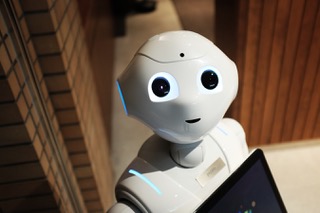Technology is fascinating. Regardless of anyone’s rate of adoption or access to technology, there is a very clear and very present note from the future that whispers, “catch…up.”
This may mean catching up on learning about new technology or catching up on using technology to increase productivity.
If you take a moment to review the top 10 breakthroughs in 2018, you’ll see things like 3D metal printers, cities proposing robots perform tasks like delivering mail, and earbuds that translate different languages in an instant.
There are some pretty amazing advances in technology! How are we supposed to keep up when there are plenty of opportunities to take advantage of the technologies available to us now?
In my experience, I’ve learned that just because the technology is available doesn’t mean that it gets adopted. How long have macros been available in Excel? How long have employees had access to VBA?
Employees have had the access but may not have been encouraged to explore increasing productivity or quality. Some people may take the initiative themselves being driven by some sort of incentive or their natural curiosity to learn. In the absence of incentive or curiosity, encouragement may be needed along with the reassurance of job security…but can we truly guarantee job security? Employees aren’t dumb.
How is this for an example. If 200 widgets need to be moved per day and we currently need 10 employees to move those widgets, then each employee is clearly responsible for 20 widgets per day. Each employee is paid a rate of X based on the production expectation.
Let’s say Taylor discovers how to move 30 and then 40 widgets per day with the use of technology. Taylor has added value to the company by producing twice as much as other employees; however, now there is only a need for 9 employees instead of 10.
Given this simple example, it is easy to understand, or fear, the impact of technological growth and automation. How do we make sure YOU remain one of the nine that are needed? Is there pressure to duplicate Taylor’s process? And if so, do you want to be the first person or the third person to duplicate Taylor’s process? Remember, everyone is still getting paid X dollars for moving the widgets.
Each team member not adopting the new technology, or new process can still provide value in different ways. With the increase in automation and technology there should be an increase in processes and controls to ensure quality. Someone needs to know the process inside and out to account for changes that need to take place. Someone needs to ensure that the process is being followed. Someone needs to understand what risks are involved and what controls need to be in place.
It is understandable why automation and technological advancements can be uncomfortable to adopt, especially if the outcome potentially leads to the need for fewer full-time employees. This discomfort of identifying where machines could replace humans is being experienced globally. People want to understand if automation will be a good or bad thing.
One would hope that a company identifies ways to compensate and keep all 10 employees engaged to meet customer or business needs. Do companies have the platform, time, or people dedicated to help navigate through these adjustments in ways that provide value to everyone involved?
What is even more fascinating than technology is the human experience and human creativity… the human element. The human interaction and everything lovely, good, hot, cold, bad, awkward, and ugly about it.
Automation or artificial intelligence can never duplicate the human experience and human creativity. So knowing this, what products, jobs, or services can be created or enhanced with the human touch?
Our Vision:
Our vision is to be a connecting and reconnecting platform for people, companies, and nonprofits that contribute to the economy and benefit society.
Helpful Resources:
10 Excel Functions Everyone Should Know
Where machines could replace humans — and where they can’t (yet)


